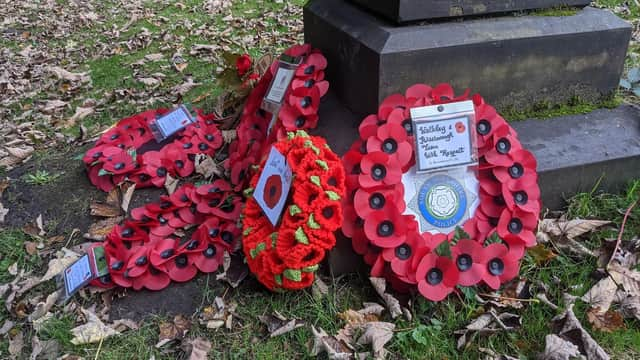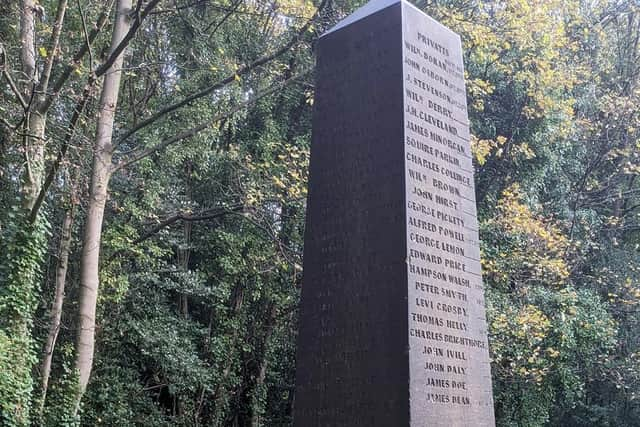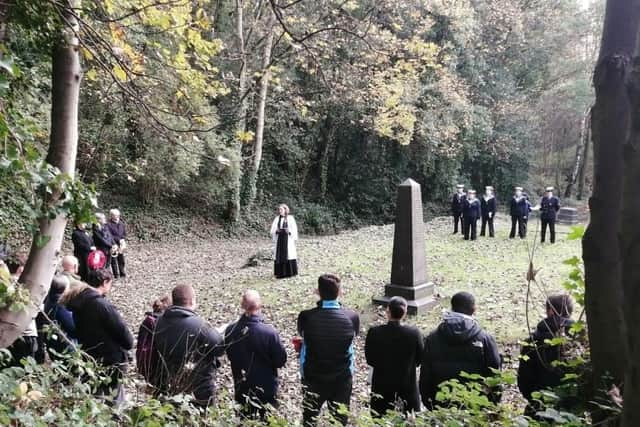Sheffield Wardsend Cemetery tells stories of its World War One dead in online memorial


Wardsend Cemetery, located off Livesey Street, has 16 official war graves from World War One, and 19 more men who died are included on family memorials.
All their stories have been researched by Sally Jowitt, of the Friends of Wardsend Cemetery, and can now be read on the group’s website at wardsendcemetery.wordpress.com/2021/06/21/world-war-and-wardsend.
Advertisement
Hide AdAdvertisement
Hide AdThey include brothers Private Arthur Frederick Alcock and Service Corporal William Charles Alcock. Both were born in London before their family moved to Netherthorpe by 1911.
Arthur, aged 21, was killed in action in France in June 1915, two months after he arrived with the 4th (Hallamshire) Battalion of the York and Lancaster Regiment.
Younger brother William fought with the 7th Battalion of the King’s Own Yorkshire Light Infantry (KOYLI). He died also aged 21 of his wounds in September 1917, just nine months after the death of his father, Arthur, in Sheffield.
Some, like Gunner Albert Grundy of the Royal Field Artillery, who died in June 1918 aged 23, had been treated in Sheffield military hospitals. Albert died of TB at Lodge Moor isolation hospital.


Advertisement
Hide AdAdvertisement
Hide AdPrivate Ernest Hides, aged 23, was a Sheffielder who had moved to Australia, served with Australian forces and was killed in action at Gallipoli. He is included on a family headstone at Wardsend.
Another casualty, Private Herbert Jubb of the Border Regiment, was probably a casualty of mustard gas in August 1918.
He died on November 3, 1918 in a military hospital in Brighton and was buried at Wardsend only three days before the armistice.
The website says that Herbert’s grave and the remains of his Commonwealth War Graves Commission memorial were discovered by Hugh Waterhouse of the Friends group.


Why are some Wardsend Cemetery war graves marked with wooden crosses?
Advertisement
Hide AdAdvertisement
Hide AdIt was one of the forgotten war graves at Wardsend which are marked with a wooden cross as part of the Friends’ project to find and mark them all.
The crosses are designed to resemble the original wooden crosses placed on First World War graves before they were replaced with headstones.
Lance Corporal Albert Frederick Schwabe Mills, who served with the 10th Battalion York and Lancaster Regiment, died in April 1917, aged 19.
He died in the Battle of Arras on the Western Front and had only been in the trenches for one or two days.
Advertisement
Hide AdAdvertisement
Hide AdThe website forms an extraordinary and moving record of mainly young, working-class lives cut short, and includes photographs and newspaper clippings.
The Friends held their annual Remembrance service at the cemetery. It was conducted by Rev Amy Hole from The Vine, a church which has historic connections to St Philip's Church and Wardsend.
Chair of the Friends group, Howard Bayley, said: “The two minutes silence was accompanied by bird song, sounds from the factory across the River Don and the rhythmic thud of a drop hammer, reminding us that our little bit of countryside on the banks of the River Don is in fact tucked away in the midst of a busy city.”
